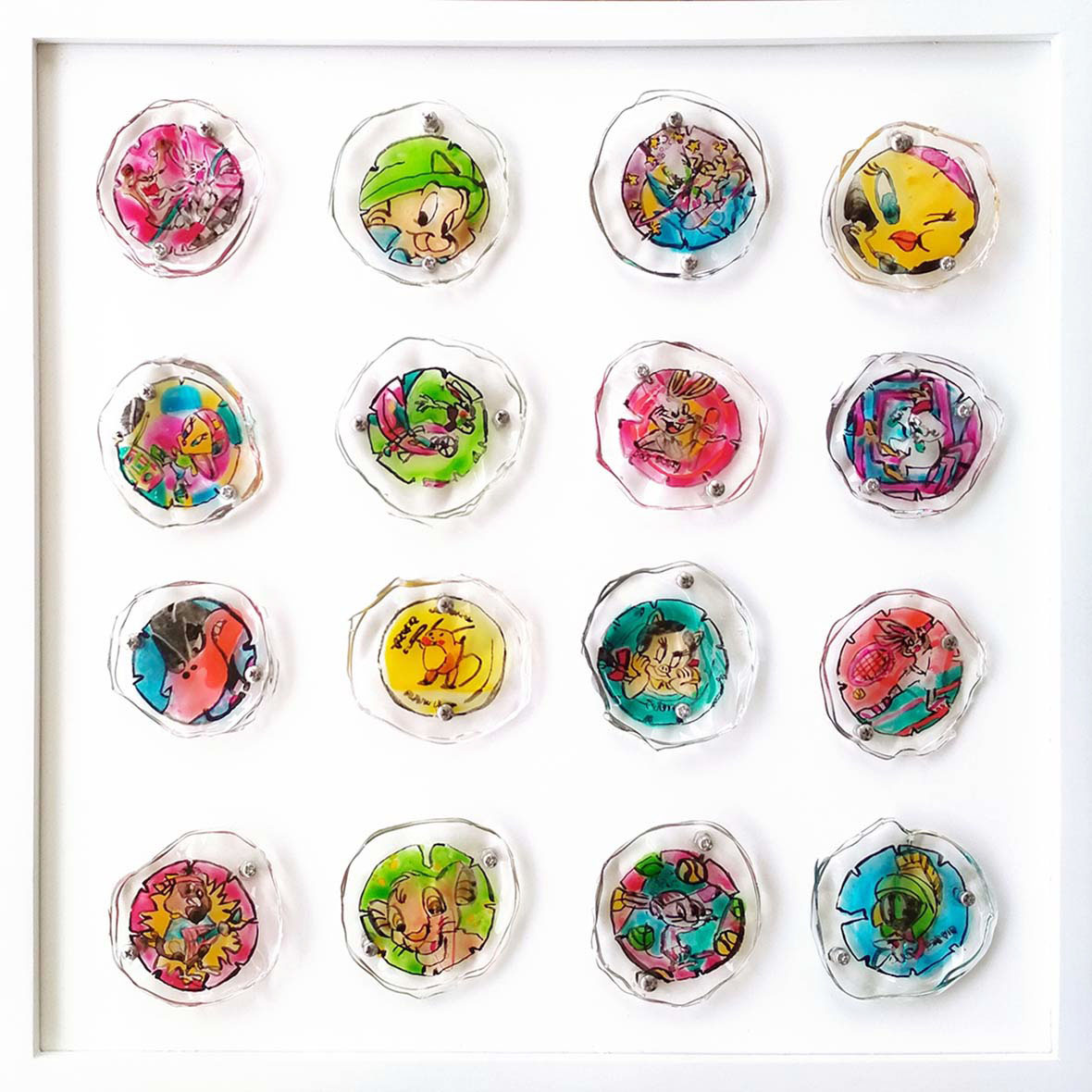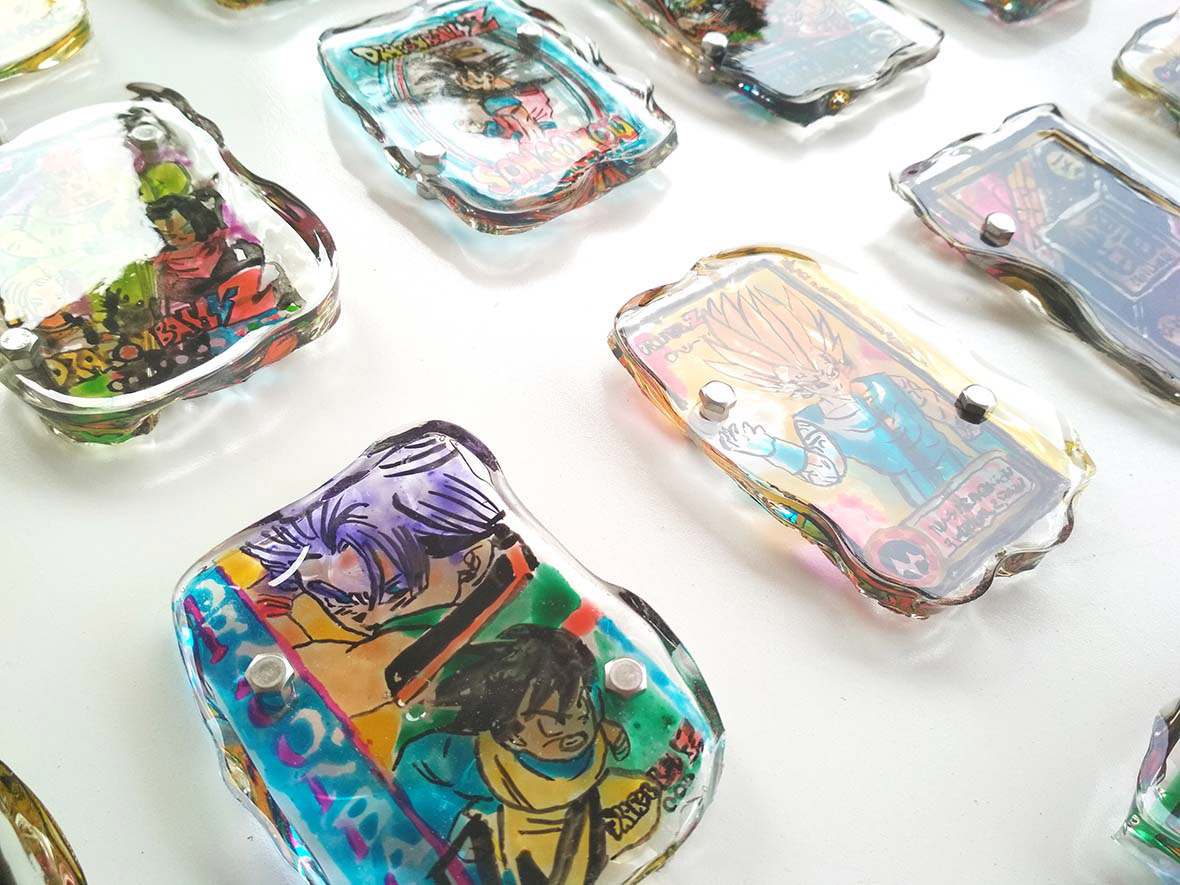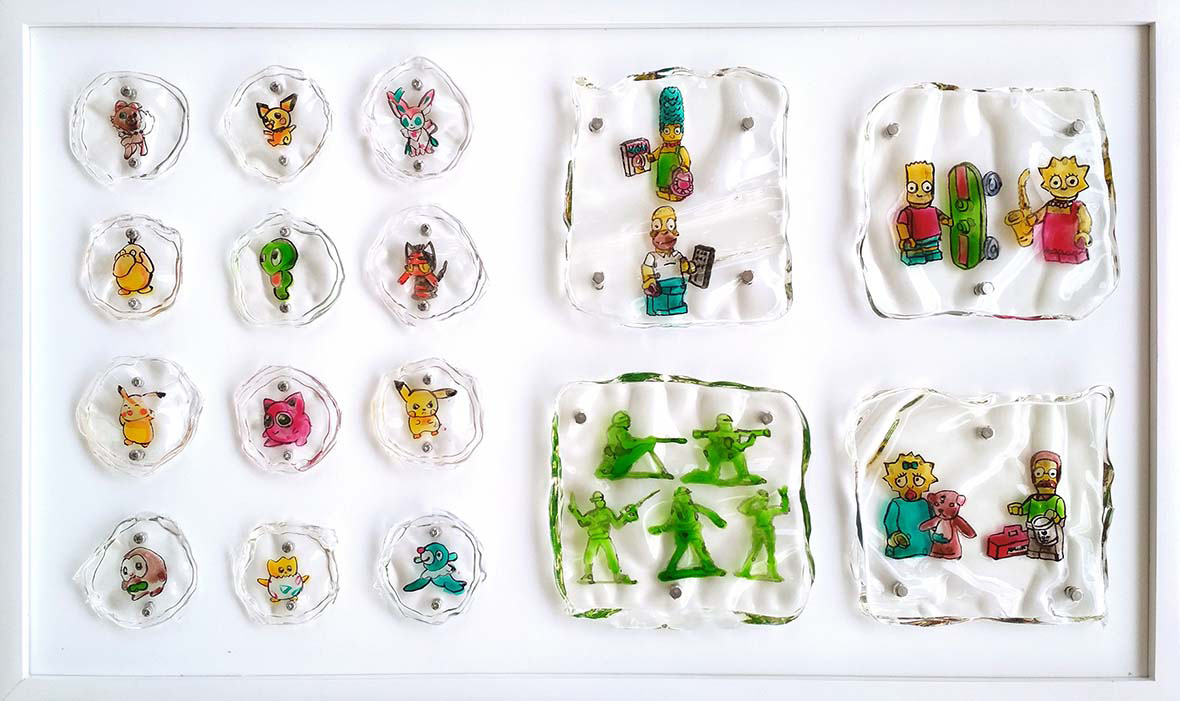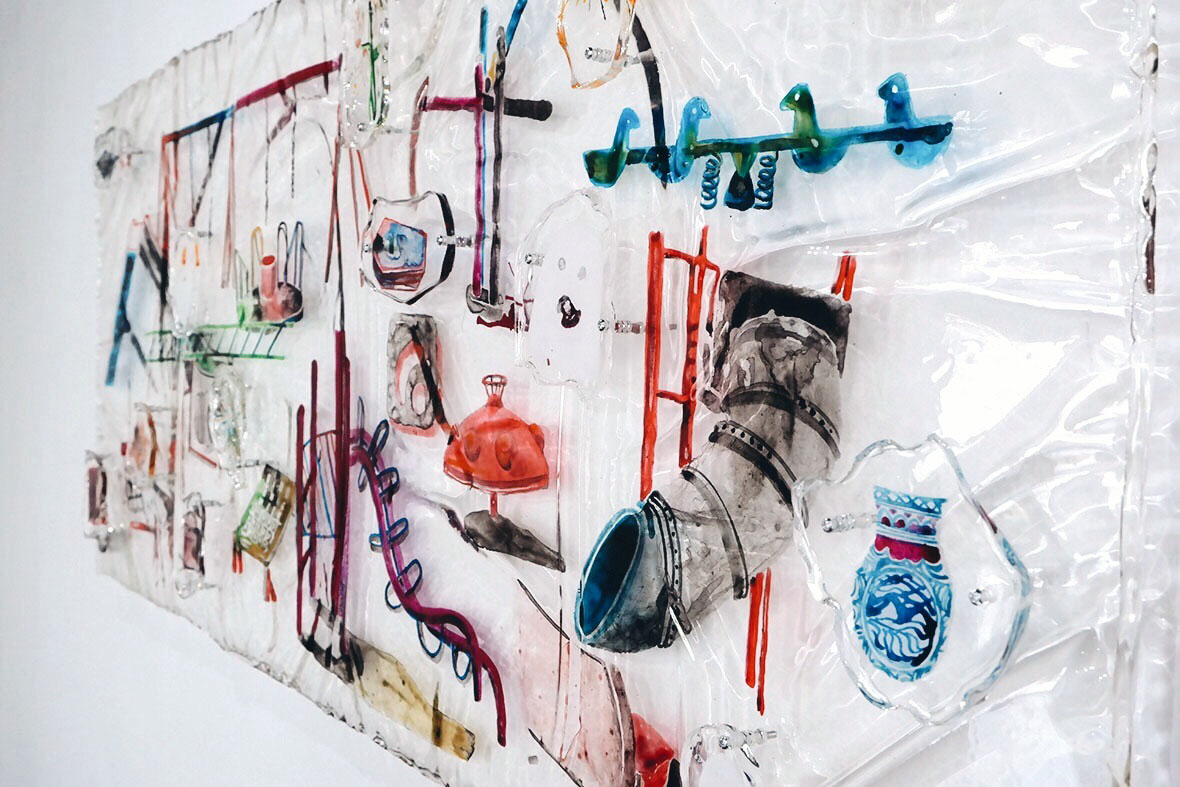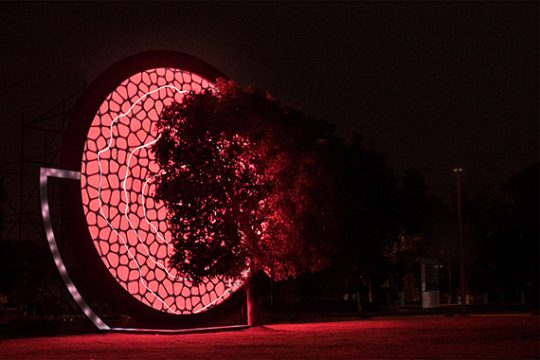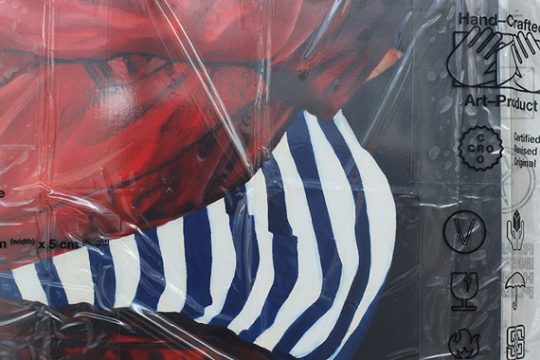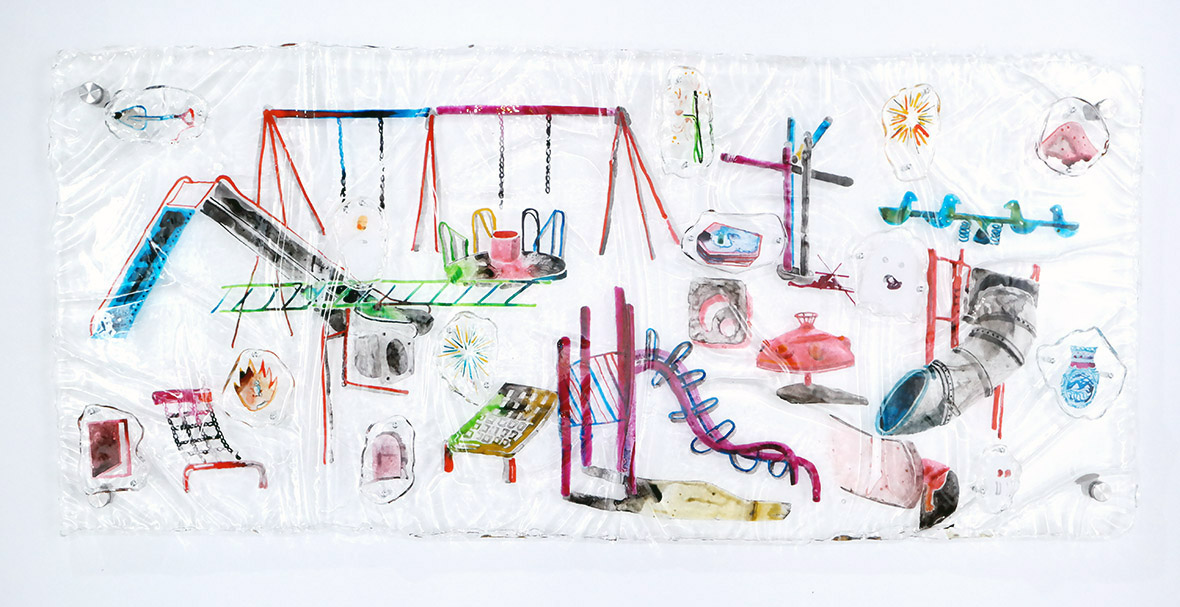
Meliantha Muliawan is a Jakarta-based artist who creates stunning works of art on resin. Intrigued by the visual distortion that occurs when looking through the translucent material, she had the epiphany to use the material as a canvas. “I was just bored with the normal mediums and wanted to find a new way to approach my art,” she comments. “It’s only been two years since I started working with resin. That’s not that long right?”
出生于 1992 的艺术家 Meliantha Muliawan,目前在印度尼西亚的雅加达生活和工作。她创作的系列作品,主要都是以树脂作为媒介进行实验创作。这是一种可令光线通过的半透明介质,并会产生类似于在水下般的轻微扭曲效果。对此,Meliantha 笑说,“我只是厌倦了常规媒介,想找个新的方式。”
When she began experimenting with different mediums, she found herself missing the feeling of working with paper or traditional canvas. In the search for a similar yet different replacement for these familiar mediums, she stumbled across resin. Muliawan refers to resin as a “neutral” material due to its translucency. She considers it to be a highly versatile medium when compared to paper, which is generally only available in white or a solid color. “Resin is clear yet and offers a sense of dimension,” she explains. “It feels like I’m painting on ice cubes, and looking at it after, it’s like my paintings are underwater. But one of my favorite things about working on resin is its interaction with light. It’s quite interesting to see the shadows my art casts.”
“我用树脂材质创作才 2 年,还不算久吧?” Meliantha 把自己称为“新手”,有时候还是会想念在画布上画画的感觉。所以,她打算找一种“中立”的介质,能够充当既透彻又无色的背景,比纸更易控。这时无色的树脂材料就成了首选,“它干净澄澈,还能够带来些许立体的维度,就像冰块那样。更惊喜的是,当有光照射它的时候,它还能制造出仿佛在水下般的涟漪。”
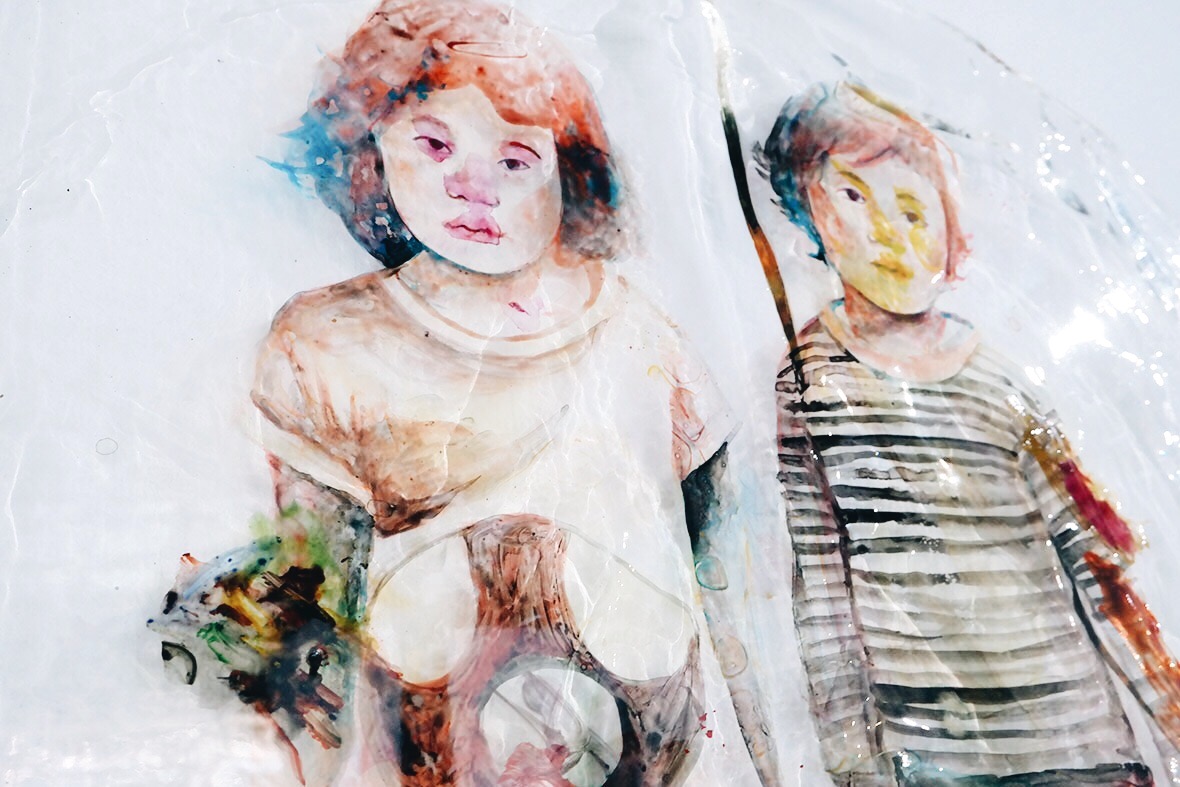
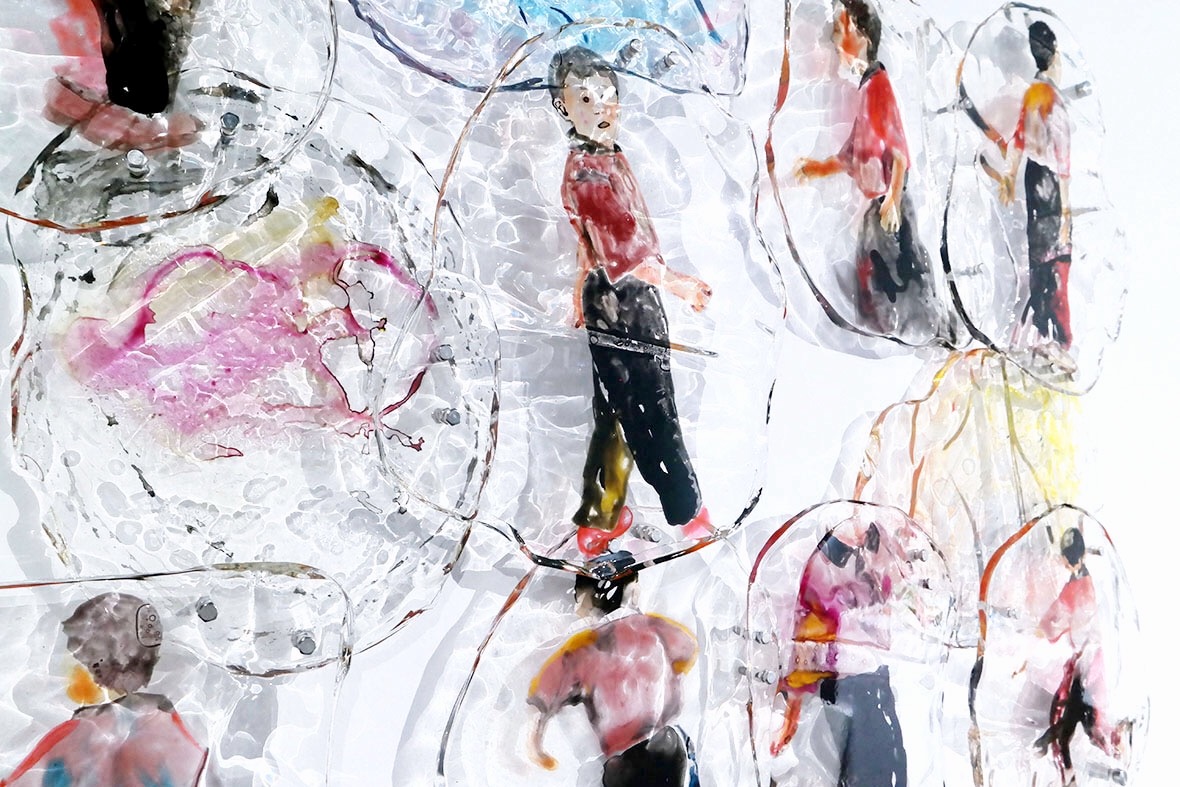
While Muliawan is often inspired by random musings and works to directly turn these thoughts into paintings, she admits that, often times, referencing photos or a real-life model is quite helpful in her creation process. “It’s great if I have a reference that I can look at,” she says. “But it’s always more fun for me to try and draw an idea that suddenly pops up in my head.”
As a visual person, she finds herself often associating certain images with different periods in her life. “For example, when I think about my childhood, an image of a spider comes up,” she says with a grin. “Why? It’s because I played Tetris a lot, and the Tetris game cartridge had a picture of a spider on it.”
“Usually, when I start working, I’ll begin by conceptualizing a central theme. Then I’ll envision the images that could work with it, and after, I’ll look at references to finalize the idea. But I feel like my work shouldn’t be obvious – there should be layers that hint at the underlying themes. Going back to my story about the spider, viewers might not understand the full story without me explaining it, but in a weird way, they’re connecting with my memories and feelings.”
Meliantha 图像的灵感来源于她想到某些事时的“灵光乍现”,但也需要找到“模特”或者照片,去把它们描绘出来,“如果能看到真人真事那就最好了。”“对我来说,画出那些时不时闪过脑海的形象很有趣。比如我想起我童年的时候,我就回想起一个蜘蛛的形象。为什么呢?因为我小时候经常玩俄罗斯方块,我记得这个游戏开始前有个蜘蛛的形象,所以我想起童年也就会联想到蜘蛛……”
“通常来说,我着手创作的话,会先想到一个主题,然后想到某个形象,然后我就会想收集数据,最终意识到我的形象来自哪里。这并非那么‘显而易见’,它应有一个层次。当然,还会有些许提示。就像我这个蜘蛛的故事一样,观者们也应当要试图去猜测。他们并不能完全知道整个故事,但某种程度上会感受到我所感受的。”
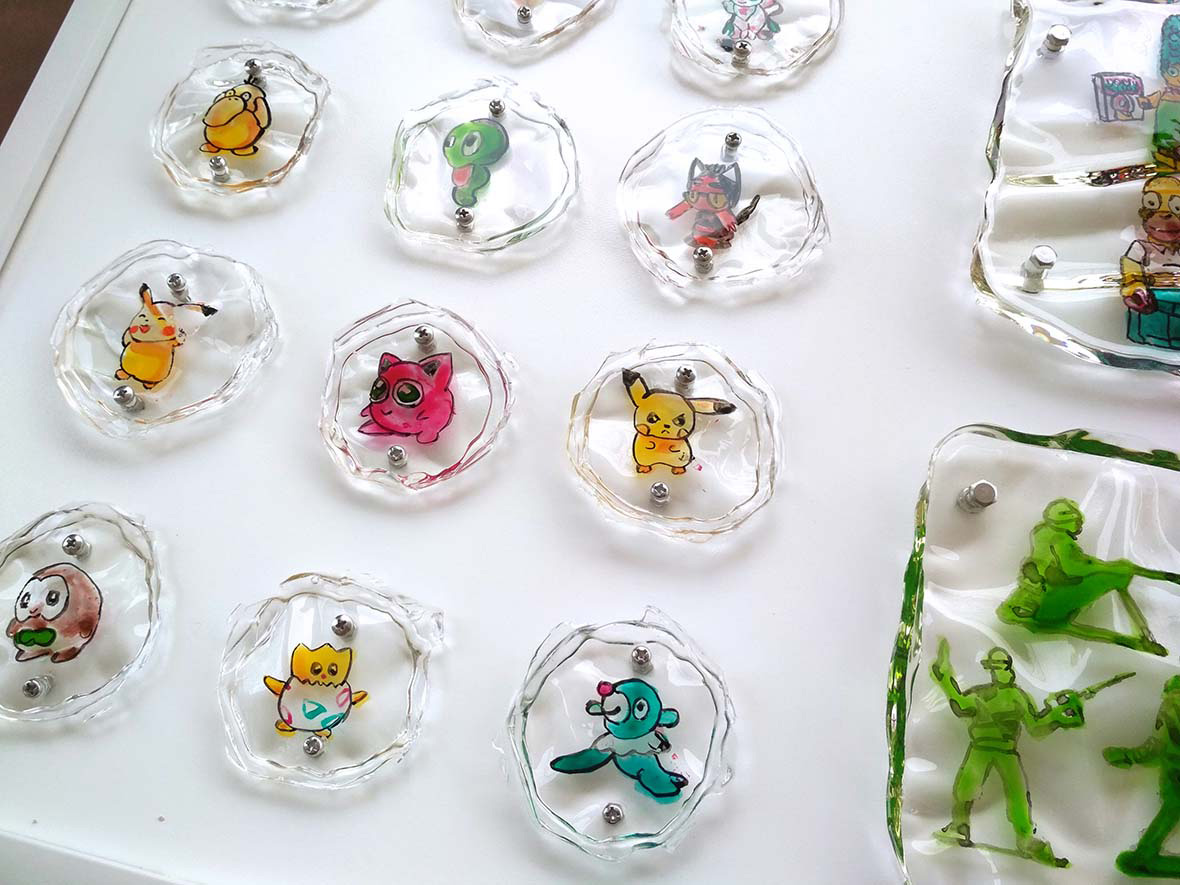
While not immediately obvious in her art, Muliawan cites Salvador Dali and Sigmund Freud as two of her biggest influences. “Dali’s paranoiac-critical method and Freudian’s theories helped me grow as an artist. These techniques and concepts helped me add dimensions to my work. They’ve allowed me to not only create an image but craft narratives around my art. It’s difficult for me to properly describe it, but Dali and Freud’s work has really given me a lot of confidence and helped me streamline my thought process.”
至于那些闪现的灵感,Meliantha 从萨尔瓦多・达利(Salvador Dali)和弗洛伊德(Sigmund Freud)的理论中汲取而来的。“达利的‘偏执狂批判法(paranoiac-critical method)’对我影响很大。而弗洛伊德的心理学理论,对我有很大的帮助,它为我的想法添加了不同的层次,比如将叙事性的故事转变成我的作品图片形式。我很难用语言来描述,但他的理论和方法对我很有裨益,并且让我变得更自信、思考更流畅。”
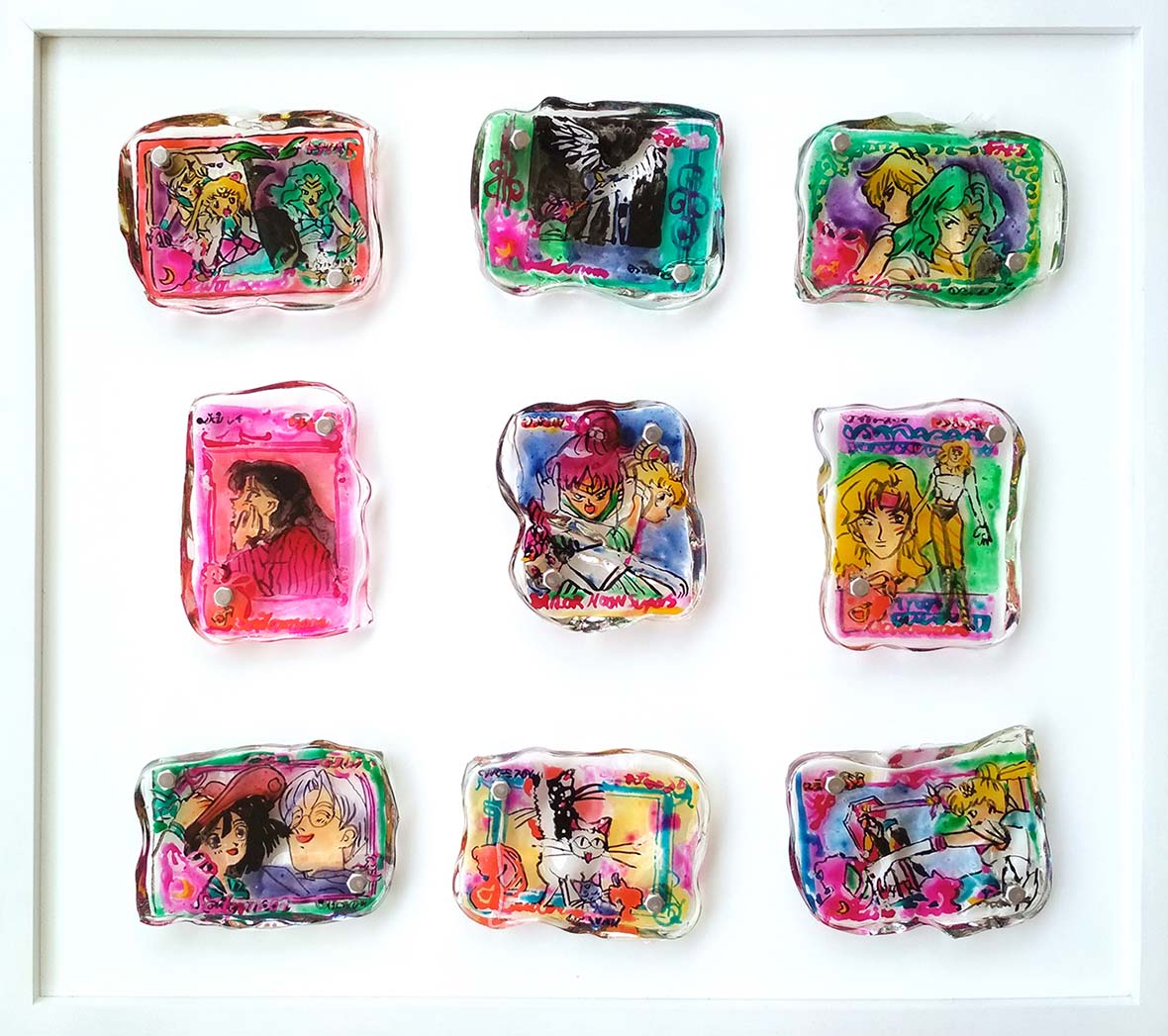
Website: melianthamuliawan.wixsite.com
Instagram: @melianthamuliawan
Contributor: Chen Yuan
Image Courtesy of Meliantha Muliawan
网站: melianthamuliawan.wixsite.com
Instagram: @melianthamuliawan
供稿人: Chen Yuan
图片由 Meliantha Muliawan 提供

